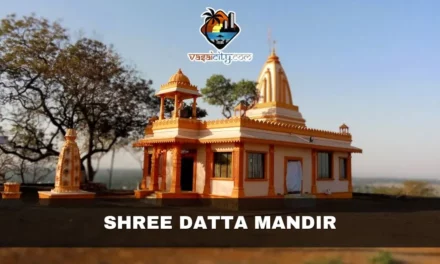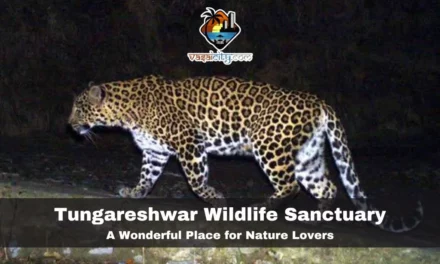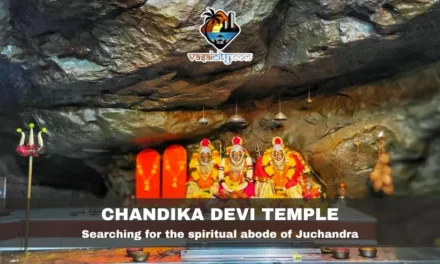Have you ever sought a natural way to heal or relax your body and mind? Then perhaps you should visit the ancient temple town of Vajreshwari in the Thane District of Maharashtra, India. Here, you can find a cluster of hot springs that have been revered for thousands of years for their therapeutic and rejuvenating properties.
In this article, we will take a closer look at Vajreshwari, its history, significance, and the many reasons why you should visit this hidden gem in India.
Table of Contents
Where is Vajreshwari?
Vajreshwari, a small town in the Thane district of Maharashtra, is a place of great historical and mythological significance. It is renowned for the Vajreshwari Temple and the hot springs that have attracted people from all over India for centuries. In this article, we will explore the enigma of Vajreshwari and discover its many treasures.
Discovering the Enigma of Vajreshwari
Vajreshwari is a small town situated at a distance of 75 km from Mumbai. It is surrounded by hills and is known for its natural beauty and tranquility. The town gets its name from the Vajreshwari Temple, which is dedicated to the goddess Vajreshwari, also known as Vajrayogini.
Historical Significance of Vajreshwari
Vajreshwari has a rich historical significance that dates back to the Maurya period, around 3rd century BC. The town is said to have been a flourishing trading center during that time. It was also an important center for the Buddhist and Jain religions. Later, during the medieval period, Vajreshwari became a Hindu pilgrimage center.
Geographical Location
Vajreshwari is situated in the Thane district of Maharashtra, at an altitude of around 300 meters above sea level. It is surrounded by the Tungareshwar hills and is located on the banks of the Tansa River. The town is well connected by road and rail, with regular bus and train services from Mumbai and other parts of Maharashtra.
The Great Vajreshwari Temple
The Vajreshwari Temple is the primary attraction of the town. It is considered one of the 51 Shakti Peethas, or sacred shrines, in India. The temple is built in the Hemadpanthi style of architecture, which is characterized by the extensive use of stone. It is an architectural marvel and is said to have been built during the 9th century AD.
Mythology and Legend associated with the Temple
According to legend, the Vajreshwari Mandir was built at the site where the toenail of the goddess Sati had fallen. Sati was the first wife of Lord Shiva, and she had immolated herself in grief after her father insulted her husband. The temple is also associated with the legend of the demon Mahishasura, who was vanquished by the goddess Durga, also known as Vajreshwari.
Architectural Marvels of the Temple
The Vajreshwari Temple has several architectural marvels, such as the central dome, which is supported by four pillars and is adorned with intricate carvings. The temple also has a carved stone entrance, a mandapa, and a sanctum sanctorum. The temple’s walls are decorated with exquisite carvings and sculptures, depicting various gods and goddesses.
Festivals and Celebrations at the Temple
The temple celebrates several festivals throughout the year, such as Navratri, Diwali, and Holi. The temple also hosts an annual fair during the months of January and February, which attracts thousands of devotees from all over Maharashtra.
Hot Springs of Vajreshwari
Vajreshwari is also known for its hot springs, which are said to be rich in mineral content and have several health benefits. The hot springs are located on the banks of the Tansa River and are believed to have been in existence for over 1,000 years.
Historical Significance of the Hot springs
The hot springs at Vajreshwari have a long historical significance. They were mentioned in the ancient Indian scriptures, such as the Skanda Purana, which dates back to the 8th century AD. The hot springs were believed to have medicinal properties and were used for healing various ailments.
Health benefits of Hot Springs
The hot springs at Vajreshwari are said to have several health benefits, such as relieving stress, improving blood circulation, and reducing inflammation. The water is also believed to aid in the treatment of skin disorders, rheumatism, and arthritis.
Water Temperature, flow, and Mineral Content
The water temperature at the hot springs varies from 40°C to 50°C. The flow of water is consistent throughout the year, and the mineral content is said to include sulfur, calcium, and magnesium.
Exploring the Caves of Vajreshwari
Vajreshwari is also home to several ancient caves, which are believed to date back to the 6th century AD. The caves are located in the Tungareshwar Wildlife Sanctuary and offer a unique opportunity to explore the region’s natural beauty.
Geography and Geology of the Caves
The caves are located in the Tungareshwar Wildlife Sanctuary, which is spread over 85 square kilometers. The caves are carved out of basalt rock and have intricate carvings on their walls and ceilings.
Significance and History of the Caves
The caves of Vajreshwari have great historical significance. They are believed to have been used by the Buddhist and Jain monks for meditation and as shelters. The caves are also associated with the Taoist philosophy of China, as many of the symbols and motifs found on the walls of the caves resemble those found in ancient Chinese literature.
Cave exploration and adventure tourism
The caves of Vajreshwari offer a unique opportunity for adventure tourism. Visitors can explore the caves and witness the beautiful carvings and sculptures that adorn their walls. The caves are also home to several rare species of flora and fauna, making them a popular spot for nature enthusiasts.
The Allure of Nature in Vajreshwari
Vajreshwari is home to several natural landscapes and trails that offer a unique and refreshing experience for visitors. The town is surrounded by hills and is home to several wildlife sanctuaries and natural parks.
Flora and Fauna of Vajreshwari
Vajreshwari is home to several rare and endangered species of flora and fauna. The Tungareshwar Wildlife Sanctuary is home to several species of birds, reptiles, and mammals, such as the Indian leopard, the sloth bear, and the Indian python.
Natural Landscapes and Trails
Vajreshwari is surrounded by hills and is home to several natural parks and trails. The Tungareshwar National Park is a popular spot for picnics and trekking, and the Salher Hill Range offers spectacular views of the surrounding region.
Wildlife Conservation Efforts and Ecotourism
Vajreshwari is associated with several wildlife conservation efforts, such as the Save the Leopard campaign. The town is also home to several ecotourism projects, which aim to promote sustainable tourism and preserve the region’s natural beauty.
Discovering the Culture and People of Vajreshwari
Vajreshwari is a melting pot of different cultures and traditions. The town has a rich history, which is reflected in its architecture, handicrafts, and cuisine.
People and Traditions of Vajreshwari
The people of Vajreshwari are known for their hospitality and warmth. They follow ancient customs and traditions and are deeply rooted in Hinduism.
Local Markets and Handicrafts
Vajreshwari is known for its handicrafts, such as the Warli art, which is a form of tribal art. The town also has several local markets that sell a variety of handmade items, such as pottery and textiles.
Gastronomic Delights of Vajreshwari
Vajreshwari is known for its delicious cuisine, which is a blend of different flavors and spices. Some popular dishes include Vada Pav, Pav Bhaji, and Misal Pav. The town is also famous for its sweets, such as Modak and Pedha.
Accommodation and Travel
Vajreshwari has several accommodation options, ranging from budget to luxury hotels. The town is well connected by road and rail, and the best time to visit is from October to February.
Getting to Vajreshwari
Vajreshwari can be easily reached by road and rail. The nearest railway station is Vasai Road, which is around 30 km away. The town is also well connected by bus, with regular services from Mumbai and other parts of Maharashtra.
Accommodation Options – Budget to Luxury
Vajreshwari has several accommodation options, ranging from budget to luxury hotels. Some popular options include the Forest Hills at Tala, the Silent Hills Resort, and the Golden Toff Resort.
Best time to visit and Travel tips
The best time to visit Vajreshwari is from October to February, when the weather is pleasant and cool. It is advisable to carry warm clothing during this time, as the nights can get chilly. Visitors should also carry sunscreen, insect repellent, and comfortable shoes for hiking and trekking.
Conclusion
Vajreshwari is a place of great historical and mythological significance, with several attractions that appeal to travelers of all ages. From the ancient Vajreshwari Temple to the natural beauty of the hot springs and the wildlife sanctuaries, Vajreshwari offers a unique and refreshing experience for visitors. So if you are planning a trip to Maharashtra, make sure to put Vajreshwari on your list of must-visit places.
Frequently Asked Questions
-
Where is Vajreshwari located?
Vajreshwari is located in the Thane district of Maharashtra, around 75 km from Mumbai.
-
What is the historical significance of Vajreshwari?
Vajreshwari has a rich historical significance that dates back to the Maurya period, around 3rd century BC. It was a flourishing trading center during that time and later became a Hindu pilgrimage center.
-
What are the main attractions at the temple of Vajreshwari?
The main attractions at the Vajreshwari Temple include the central dome, the carved stone entrance, and the mandapa.
-
Are the Hot springs of Vajreshwari safe for bathing?
Yes, the hot springs at Vajreshwari are safe for bathing and are said to have several health benefits.
-
What kind of wildlife can be found in Vajreshwari?
Vajreshwari is home to several species of wildlife, such as the Indian leopard, the sloth bear, and the Indian python.
-
What is the best time to visit Vajreshwari?
The best time to visit Vajreshwari is from October to February, when the weather is cool and pleasant.
-
What are some adventurous activities to do in Vajreshwari?
Some popular adventurous activities to do in Vajreshwari include trekking, exploring the caves, and wildlife safaris.
-
What kind of handicrafts can you find in Vajreshwari?
Vajreshwari is known for its Warli art, which is a form of tribal art. Visitors can also find a variety of handmade items, such as pottery and textiles.
-
Are there any gastronomical specialties in Vajreshwari?
Vajreshwari is famous for its Maharashtrian cuisine, which includes dishes such as Vada Pav, Pav Bhaji, and Misal Pav. The town is also known for its sweets, such as Modak and Pedha.
-
What kind of accommodation options are available in Vajreshwari?
Vajreshwari has several accommodation options, ranging from budget to luxury hotels. Some popular options include the Forest Hills at Tala, the Silent Hills Resort, and the Golden Toff Resort.










Vajreshwari is truly a hidden gem! This article beautifully captures the spiritual essence and natural beauty of the place. I’ve visited the hot springs and temple many times, but reading about the history and nearby attractions gave me a whole new appreciation. Would love to see more content like this that promotes local heritage.
Vajreshwari is truly a hidden gem near Mumbai!
I recently visited the temple and the hot springs with my family, and the entire experience was both spiritual and refreshing.
Thank you for sharing the historical background… I didn’t know the temple was built by Chimaji Appa after the Bassein war.
Great write-up!